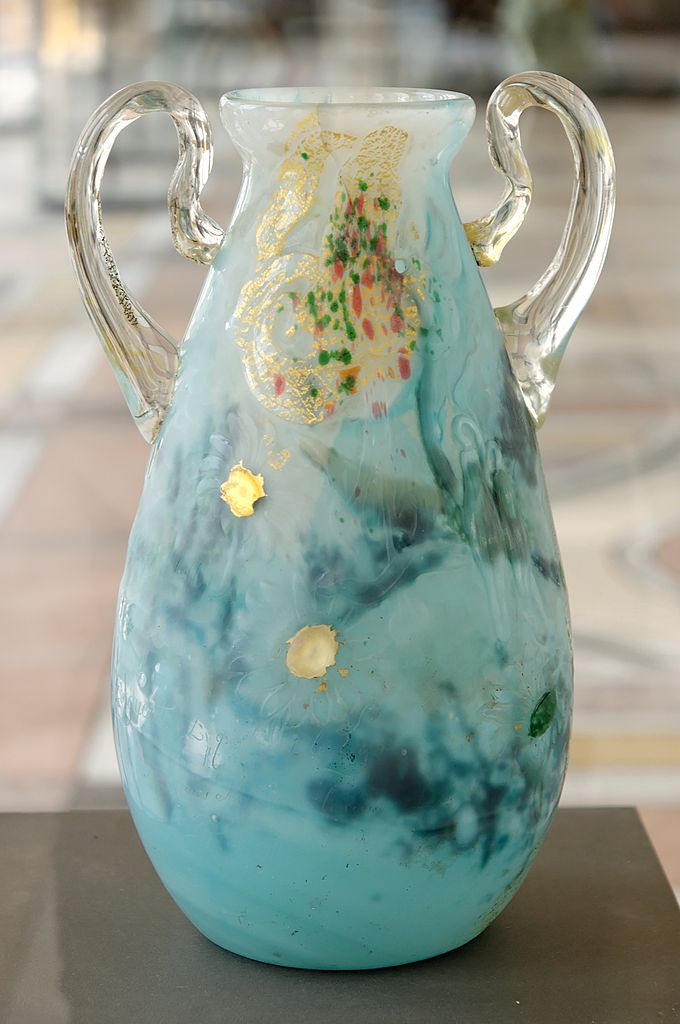Frozen Breath of the Polar Night: An Introduction to Art Nouveau Glass
Wednesday 7th September 2022
Justine Hopkins
‘Glass is a marvellous material. Everything about it makes it an incomparable plastic medium in the hands of an ingenious artist, offering his imagination and talent almost limitless scope for discovery’. [René Lalique].

Marguerite vase by Émile Gallé dated 1896
Glass: tough, fragile and unpredictable; colourful or colourless; capable of flowing like metal or being carved like stone. To be shaped it must be heated and reheated to extreme temperatures and as it cools it may shatter explosively without stringent precautions. No two pieces will ever be identical, and what you think you placed in the kiln will rarely if ever come out exactly as you expected and planned. Glass is dangerous, difficult and glamorous; a combination which has fascinated craftsmen and artists, chemists and collectors throughout history.
The 19th century saw the beginnings of the shift of glass-working from craft to art, and Art Nouveau glass remains some of the most spectacular ever produced. It offered a unique range of opportunities for translating the swirling energies and sinuous lines of Art Nouveau into objects to enchant the eye and intrigue the mind.
This lecture explored the achievement of the masters of Art Nouveau glass, Émile Gallé, Louis Comfort Tiffany and René Lalique, and their outstanding contribution to one of the most important movements of the last century.
Justine Hopkins studied History of Art at the Courtauld Institute. She has lectured regularly for Tate Britain, Tate Modern, V&A, National Gallery and National Portrait Gallery, as well as to Oxbridge and Bristol Universities, Christies Fine Art, the Art Fund, and groups such as the Friends of Covent Garden and U3A. Her publications include ‘The Art of John Martin’ (2001), ‘Michael Ayrton: A Biography’ (1994) and articles for Apollo Magazine and Modern Painters.
Click here for additional notes for this lecture from Justine.
